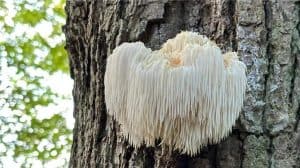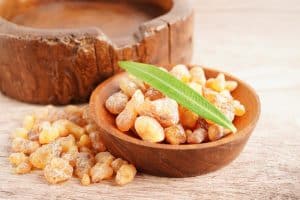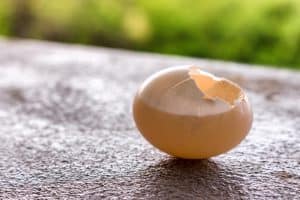How mushroom supplements for dogs are produced: extracts, full spectrum and making an informed choice
This article aims to clearly explain mushroom supplement production, highlight key quality aspects, and provide a practical checklist for dog owners.
In recent years, medicinal mushrooms have gained growing attention – not only in human health but also in supporting the wellbeing of dogs. But what does “mushroom supplement production” actually mean? What happens to a mushroom before it becomes a capsule, powder, or liquid? And how can you be sure that what you give your dog is truly effective?
Why raw mushrooms are not enough
The most valuable active compounds of medicinal mushrooms – such as beta-glucans, polysaccharides, and triterpenes – are found in the mushroom’s cell wall, which is largely made of chitin. The problem is that neither dogs nor humans can digest chitin, because the enzyme chitinase is missing from their digestive systems. This means that most of the bioactive compounds remain locked inside and unused.
That is why manufacturers use extraction – a biotechnological process that breaks open the cell wall and makes the compounds accessible. Raw mushroom powder does not equal a mushroom extract: the former only grinds the mushroom, while the latter concentrates the active substances.
Traditional extracts: combining hot water and alcohol
Classic mushroom extracts are usually produced in two main steps:
- Hot water extraction: releases water-soluble compounds such as beta-glucans.
- Alcohol extraction: isolates alcohol-soluble compounds such as triterpenes.
The two extracts are often combined and then dried into powder through spray drying. This technique turns the liquid extract into a fine mist and dries it instantly with hot air, preserving the active compounds and ensuring long shelf life.
High-quality mushroom extracts can reach 10:1 or 20:1 concentration – meaning 10–20 grams of raw mushroom are used to produce 1 gram of extract.
What’s the problem with plain mushroom powder?
Many dietary supplements use only dried mushroom powder – manufacturers simply dry and grind the mushrooms. These powders hold the full mushroom composition, but the chitin structure traps the active compounds, so the body absorbs very little. Ground powder also loses stability quickly, oxidizes easily, and offers only minimal benefits during digestion.
Extracts, on the other hand, offer pre-processed active compounds that the body can absorb faster, more efficiently, and in greater amounts.
Full Spectrum Mycoproduct™ – the new generation of mushroom supplements
The Aloha Medicinals developed the unique Full Spectrum Mycoproduct™ technology, representing a breakthrough in mushroom processing. As one of the USA’s leading biotech companies, Aloha has worked with mushrooms since 1999, holds more than 1,000 strains, and is the world’s largest producer of full spectrum mushroom ingredients.
What makes the Full Spectrum Mycoproduct™ special is that it does not rely on only one part of the mushroom, but uses the entire fungal organism with all its valuable compounds:
- the fruiting body (the visible cap),
- the complete fungal biomass with all internal structures,
- the natural metabolites formed during growth,
- and other bioactive compounds produced throughout development.
This multi-layered approach makes sure the final product offers the full spectrum of active compounds – rather than focusing on just one element, such as beta-glucans, as many traditional extracts do.
How is a Full Spectrum Mycoproduct™ made?
“Full spectrum” does not mean simply grinding mushrooms. It describes a strictly controlled biotechnological process that follows these steps:
1. Extended, controlled cultivation
Grow the complete mushroom organism – including the fruiting body and its inner tissues – under sterile laboratory conditions on natural, organic nutrients (not on rice or sawdust). Let the growth cycle run for months or even years so the mushroom transforms nutrients into a wide range of bioactive compounds.
2. Complete bioconversion
Direct the cultivation so the raw growth medium (such as oats or millet) converts almost entirely into mushroom tissue and active substances. In Aloha’s products, this process leaves less than 2% residual substrate, far less than in many other manufacturers’ products.
3. Micronization (ultra-fine milling)
Harvest the mushroom biomass – including the fruiting body and valuable metabolites formed during growth – and grind it into microscopic particles. This step boosts the bioavailability of the compounds.
4. Overcoming the chitin barrier
Address the main drawback of raw mushroom powder: its cell walls contain chitin, which humans and animals cannot digest. The Full Spectrum process combines cultivation and micronization to break down this structure and make the compounds more accessible.
Mushroom supplement production – What does a full spectrum extract contain?
Unlike traditional extracts, the Full Spectrum Mycoproduct™ preserves the entire range of mushroom compounds, not just a single molecule:
- polysaccharides (such as beta-glucans),
- triterpenes,
- sterols,
- enzymes,
- proteins,
- and many other bioactive substances,
which work together to enhance the final product.
Comparison table
| Plain mushroom powder | Traditional extract | Full Spectrum Mycoproduct™ | |
|---|---|---|---|
| Chitin problem | Yes, closed cell wall | No, cell wall is broken | Partially broken down, micronized |
| Compound spectrum | Complete, but inaccessible | Narrow (e.g. mainly beta-glucan) | Complete and more bioavailable |
| Extracellular compounds | Absent | Can be lost during extraction | Preserved from the cultivation process |
| Absorption | Poor | Good | Improved (enzymatic + micronized form) |
| Residual carrier material | 30–70% | None | <2% (bioconverted medium) |
| Stability and shelf life | Average | Good | Excellent |
Safe and reliable quality
Every product from Aloha Medicinals is:
- manufactured in an FDA-certified laboratory,
- organic certified by USDA and EU,
- free from animal-derived substances,
- produced with documented active compound content,
- and safe for both human and veterinary use.
If you are looking for a reliable, verified profile of active compounds, choose a product that captures the complete knowledge of the mushroom organism – in full spectrum form.
Liquid vs. powdered mushroom supplements?
Many people believe that liquid extracts are automatically better – but it’s not that simple. The effectiveness of a mushroom extract depends not on its form, but on:
- the extraction method (how deep the process goes),
- the amount and diversity of bioactive compounds,
- its stability (whether it degrades with light, air, or heat),
- and how efficiently it reaches the bloodstream after digestion.
In many cases, dogs absorb powdered mushroom extracts as well as, or even better than, liquid formulas – especially when producers micronize them into microscopic size. Powders also keep their shelf life longer, allow easier dosing, and often eliminate the need for extra carriers or stabilizers.
Source: Zmitrovich, I.V., & Wasser, S.P. (2016). “Is a Liquid Extract Better than a Dry Extract?” International Journal of Medicinal Mushrooms.
Summary
The world of medicinal mushrooms is complex, and their effectiveness depends mainly on the way manufacturers process them. Plain dried mushroom powder delivers poor absorption, traditional extracts target specific compounds, while modern full spectrum biotechnological methods preserve the complete set of active substances.
If you want real results, check how the extract was produced and choose a manufacturer who works transparently, operates under laboratory conditions, and lists documented active content.
Properly produced mushroom supplements never replace veterinary treatment, but they complement it and actively support your dog’s long-term wellbeing.
How to choose a mushroom supplement for your dog
Not all mushroom products are the same. When buying, consider the following factors:
- Documented active content: choose products that clearly state the levels of beta-glucans and other compounds.
- Full spectrum or concentrated extract: it’s an advantage if the product contains extract, not just dried mushroom powder, as extracts are more bioavailable.
- Quality assurance and certification: check if the manufacturer has GMP, ISO, or organic certification, and whether the product is lab-tested.
- Carrier ratio: avoid supplements that mostly contain rice flour or grain filler, as these reduce the amount of active compounds.
- Veterinary consultation: always consult your vet, especially if your dog is ill, on medication, or needs a special diet.
A good mushroom supplement for dogs is transparent, verified, and rich in active compounds – helping you support your dog’s health in a conscious way.
If you want to explore more about your dog’s health, check out our guides on Dog allergy and the benefits of Salmon oil for dogs. You can also read how Immune support for dogs and modern approaches such as Immunomodulatory Therapy for Dogs help maintain long-term wellbeing. For new dog owners, A puppy’s first steps in a new home offers practical advice, while our article on Boosting Your Dog’s Immune System shows you simple ways to support vitality every day.


